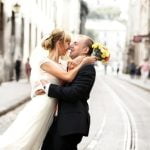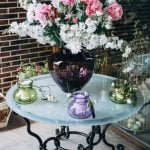Are you wondering how to address wedding envelopes? Properly addressing wedding envelopes is a crucial detail that sets the tone for your special day and shows respect to your guests. The way you address your wedding invitations reflects the formality of your event, your personal style, and sets the stage for what guests can expect on the big day.
The traditional etiquette for addressing wedding envelopes has long been observed as a formal and respectful gesture. However, modern alternatives have also emerged, giving couples more flexibility in how they choose to address their invites. In this article, we will explore both traditional and contemporary approaches to addressing wedding envelopes, as well as provide a step-by-step guide, calligraphy tips, and common mistakes to avoid.
From choosing the right calligraphy style that best represents your personality and theme of your wedding to understanding common mistakes to avoid when addressing envelopes, there are several important factors to consider. We will also delve into special circumstances such as addressing envelopes for different invitation styles (such as formal or themed) and for different guests (couples, families, children), providing helpful tips and guidelines along the way.
Traditional Etiquette for Addressing Wedding Envelopes
Addressing wedding envelopes is an essential part of wedding planning, as it sets the tone for the formality and elegance of the event. Traditional etiquette for addressing wedding envelopes is rooted in longstanding customs and protocols, which can vary depending on the specific circumstances. Whether you are addressing envelopes for formal or informal invitations, following traditional etiquette will ensure that your guests receive their invitations with the proper respect and courtesy.
When addressing wedding envelopes using traditional etiquette, it is important to be mindful of titles, suffixes, and name order. For married couples, the husband’s name typically comes first, followed by his wife’s name. If the couple shares a last name, it is appropriate to address them as “Mr. and Mrs. John Smith.” However, if they have different last names, each spouse’s full name should be written on a separate line without abbreviations.
For unmarried couples who live together or are in a long-term relationship, their names should be listed alphabetically on separate lines. If both individuals have distinguished titles such as “Dr.” or “Judge,” those titles should be included before their names. For single guests over 18 years old, it is customary to address them by their full names without any abbreviations or nicknames.
In some cases, addressing wedding envelopes may require additional considerations such as including children or acknowledging special guests. When addressing an envelope to an entire family including children under 18 years old, it is appropriate to write “The Smith Family” on the outer envelope. If you are inviting single guests with children who are not living with a partner or spouse, their children’s names should also be listed on the inner envelope along with their parent’s name.
Modern Alternatives for Addressing Wedding Envelopes
In today’s modern world, there are several alternatives to traditional etiquette when addressing wedding envelopes. While it is important to maintain a level of formality and respect, couples have the option to get creative and personalize their wedding invitations. One modern alternative for addressing wedding envelopes is using printed labels.
This can save time and ensure that each envelope is addressed accurately. However, it is important to choose a high-quality label that complements the overall look of the invitation.
Another modern approach to addressing wedding envelopes is utilizing hand lettering or custom stamps. Hand lettering adds a personal touch to each invitation and can be tailored to match the couple’s unique style. Custom stamps are also a popular choice as they offer convenience while still providing a customized look. Additionally, incorporating digital calligraphy into the addressing process has become increasingly popular due to its efficiency and professional appearance.
When considering modern alternatives for addressing wedding envelopes, it’s essential for couples to keep in mind the overall aesthetic of their wedding. Whether they opt for digital calligraphy or printed labels, it’s crucial that the chosen method aligns with the theme and tone of their special day.
| Modern Addressing Alternatives | Description |
|---|---|
| Printed Labels | A time-saving option that ensures accurate addressing. |
| Hand Lettering or Custom Stamps | Adds a personalized touch and matches the couple’s unique style. |
| Digital Calligraphy | An efficient and professional alternative that aligns with the wedding theme. |
Step-by-Step Guide to Addressing Wedding Envelopes
When it comes to addressing wedding envelopes, it’s important to follow proper etiquette and make sure your guests feel special from the moment they receive their invitation. Whether you’re going for a traditional or modern approach, addressing wedding envelopes can be a fun and creative process. Here is a step-by-step guide on how to address wedding envelopes:
1. Gather all the necessary materials: Before you start addressing the envelopes, make sure you have all the necessary materials at hand. This includes high-quality envelopes, a good quality pen or calligraphy set, and any decorative elements you may want to add.
2. Create a master list: Compile a master list of all your guests’ names and addresses in one place. This will help you keep track of who has received their invitations and ensure that no one is left out.
3. Determine the correct format: Depending on whether you are inviting couples, families, or individuals, the format for addressing the envelope will vary. For couples, both names should be included; for families, the parents’ names should be listed with “and family”; for individuals, simply their name will suffice.
4. Fill out the addresses: Start by writing out each recipient’s name and then their address on the front of the envelope. Be sure to use clear and legible handwriting or calligraphy for a polished look.
5. Add decorative touches (optional): If desired, consider adding decorative touches such as embossing, wax seals, or printed liners to give your envelopes an extra special touch.
By following these steps, you can ensure that your wedding invitations make a great first impression on your guests even before they open them up. Whether you choose traditional or modern methods of addressing wedding envelopes, putting in this extra effort will show your guests how much you care about their presence at your special day.
Tips for Choosing the Right Calligraphy Style for Addressing Wedding Envelopes
When it comes to addressing wedding envelopes, the calligraphy style you choose can really set the tone for your invitations. The right calligraphy style can add a touch of elegance and sophistication to your envelopes, while the wrong one can detract from the overall presentation. Here are some tips for choosing the right calligraphy style for addressing wedding envelopes:
1. Consider the overall theme of your wedding: If you’re planning a formal, traditional wedding, you may want to choose a classic calligraphy style with elaborate flourishes and elegant script. On the other hand, if you’re going for a more modern and minimalist look, a simple and clean calligraphy style may be more appropriate.
2. Think about readability: While it’s important for your calligraphy to look beautiful, it’s also essential that it is easy to read. Make sure to choose a calligraphy style that is clear and legible so that your guests can easily understand the addresses on their envelopes.
3. Personalize it: Consider incorporating your own personal style into the calligraphy by adding unique touches or elements that reflect your personality as a couple. This could include adding embellishments like hearts or flowers, or using different colors to match your wedding theme.
Ultimately, there is no right or wrong answer when it comes to choosing a calligraphy style for addressing wedding envelopes. It all comes down to personal preference and what fits best with the overall aesthetic of your wedding. Take your time exploring different options and consider working with a professional calligrapher who can help bring your vision to life.
Common Mistakes to Avoid When Addressing Wedding Envelopes
When it comes to addressing wedding envelopes, there are a few common mistakes that many people make. These mistakes may seem small, but they can have a big impact on the overall look and feel of your wedding invitations. In this section, we’ll discuss some of the most common mistakes to avoid when addressing wedding envelopes.
Incorrect Titles and Names
One of the most common mistakes when addressing wedding envelopes is using incorrect titles or names. It’s important to double-check the titles and names of your guests before sending out your invitations. For example, make sure to use “Mr. and Mrs.” for married couples and “Ms.” for single women. Additionally, be sure to spell names correctly and use proper titles, especially when inviting guests with professional titles such as doctors or military personnel.
Poor Handwriting or Calligraphy
Another mistake to avoid when addressing wedding envelopes is poor handwriting or calligraphy. If you’re planning to address your envelopes yourself, take the time to practice your handwriting or calligraphy beforehand. If you’re not confident in your own abilities, consider hiring a professional calligrapher to ensure that your envelopes look elegant and polished.
Inconsistent Formatting
Inconsistent formatting is also a common mistake when addressing wedding envelopes. Make sure that all of your envelopes are addressed in a consistent format, including spacing, alignment, and punctuation. This will create a cohesive and professional look for your invitations.
By being mindful of these common mistakes and following the traditional etiquette or modern alternatives for addressing wedding envelopes, you can ensure that your invitations make a beautiful first impression on your guests.
Addressing Envelopes for Different Invitation Styles (Formal, Casual, Themed, Etc)
When it comes to addressing wedding envelopes, it’s important to consider the style of the invitation in order to set the tone for the event. Whether your wedding is formal, casual, themed, or something in between, the way you address your envelopes should reflect the overall vibe of your celebration.
Formal Invitations
For a formal wedding invitation, it’s traditional to use titles and full names when addressing the envelopes. This means using “Mr. and Mrs.” for married couples and “Ms.” for single women. It’s also customary to spell out all words and titles (e.g. “Doctor” instead of “Dr.”).
Casual Invitations
Casual invitations allow for a more relaxed approach to addressing wedding envelopes. First names can be used for close family and friends, and there’s no need to include titles unless preferred by the guests themselves.
Themed Invitations
For themed weddings, such as a beach or rustic-themed celebration, consider incorporating elements of the theme into the envelope design or calligraphy style. This can help set the tone for what guests can expect at your wedding.
No matter what style of invitation you choose, it’s important to ensure that all addresses are accurate and complete. Double-checking spelling and addresses is crucial in order to avoid any mishaps with delivery. By considering the style of your invitations, you can create a cohesive look from the moment your guests receive their envelopes.
Addressing Envelopes for Different Guests (Couples, Families, Children, Etc)
In conclusion, addressing wedding envelopes may seem like a small detail, but it plays a significant role in setting the tone for your special day. Whether you choose to follow traditional etiquette or opt for modern alternatives, it’s important to ensure that your invitations are addressed with care and consideration.
By following a step-by-step guide and choosing the right calligraphy style, you can create beautifully addressed envelopes that will impress your guests from the moment they receive their invitation.
One important aspect to consider is how to address wedding envelopes for different guests. From couples and families to children and individuals with various titles and honorifics, each envelope should be addressed appropriately. Taking the time to properly address each invitation shows thoughtfulness and respect for your guests, making them feel truly special as they receive their invite.
When addressing couples, whether married or unmarried, it’s essential to use the appropriate titles and last names. For families, including children’s names on the inner envelope is a thoughtful gesture that makes them feel included in the celebration.
Additionally, when addressing envelopes for different invitation styles such as formal, casual, or themed weddings, be sure to tailor your approach accordingly. By paying attention to these details and avoiding common mistakes, you can ensure that your wedding envelopes make a lasting impression on your guests from the moment they arrive in their mailbox.
Frequently Asked Questions
How Do You Address an Envelope to a Wedding?
When addressing an envelope to a wedding, it’s important to use formal titles and full names. Start with “Mr. and Mrs.,” followed by the full name of the husband and then the wife. Be sure to include their mailing address on the front of the envelope.
Do You Write Anything on the Envelope of a Wedding Card?
It’s not necessary to write anything on the envelope of a wedding card besides the address. The inside of the card is where you would write your personal message to the couple, expressing your well-wishes and congratulations.
How Do You Write a Married Couple’s Name on an Envelope?
When writing a married couple’s name on an envelope, it is customary to use both of their full names. For example, “Mr. John Smith and Mrs. Elizabeth Smith” or “Mr. and Mrs. John Smith.”
Be sure to double-check the couple’s preference regarding how they prefer their names to be written together on correspondence such as an envelope for accuracy and respect for their wishes.

Welcome to my blog about home and family. This blog is a place where I will share my thoughts, ideas, and experiences related to these important topics. I am a stay-at-home mom with two young children. I hope you enjoy reading it! and may find some helpful tips and ideas that will make your home and family life even better!





